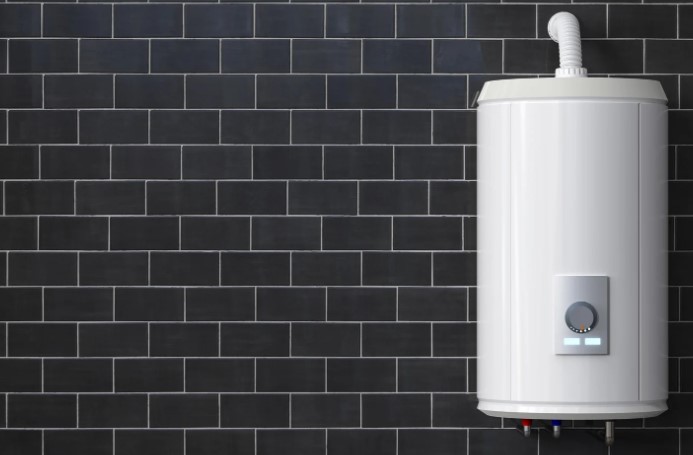
by Kanimozhi BV | May 9, 2025 | Water Heater, Appliances
Why I Asked: How Long Does It Take to Fit a New Boiler?
When my old boiler started giving up during the colder months, I knew it was time for a replacement.
But one of the first questions I had was a practical one: how long does it take to fit a new boiler? I wasn’t sure if I’d need to take time off work or plan for days without hot water tank or heating.
After going through the process myself, I realised there’s more to it than just the boiler unit. The type of boiler, the complexity of the job, and even where the boiler is located all play a role.
In this guide, I’ll share exactly what I learned from my installation—so you can be better prepared than I was.
How Long Did My Boiler Installation Actually Take?
For me, the process took just under two days.
I had a conventional boiler replaced with a combi boiler, and because it involved updating the pipework and removing an old water tank, it wasn’t a simple swap.
If you’re having a like-for-like replacement—say, a combi boiler replaced with another combi in the same place—it’s often done in a single day.
But anything beyond that, especially if you’re upgrading or relocating the boiler, will take longer.
What Factors Affect the Time to Install a New Boiler?
I learned quickly that no two installations are exactly the same.
Here are the main elements that influenced how long mine took:
Type of Boiler Being Installed
Swapping a combi for a combi is actually the speedest route.
But switching from a system or regular boiler to a combi (like I did) adds time because it requires extra plumbing and removal of old components.
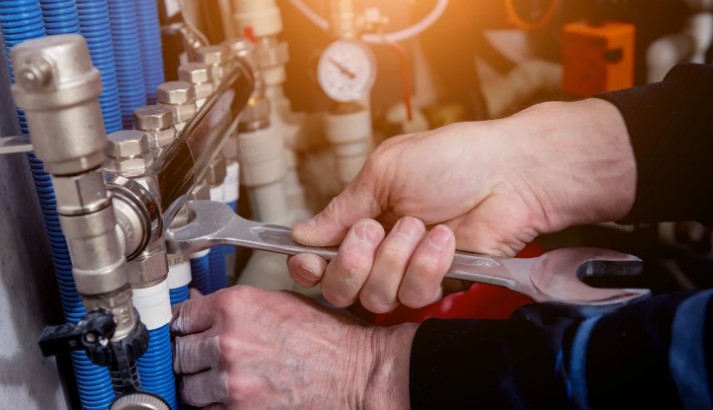
Location of the Boiler
If the new boiler goes in the same spot as the old one, that saves a lot of time.
But if you move it—say, from the kitchen to the loft or airing cupboard—you’re looking at added hours or even an extra day.
Age and Condition of the Existing System
My property had an older heating system, which meant some of the pipework needed replacing.
The engineer also recommended a system flush to clear out years of sludge. With all of that additionally added to the fitting time.
In my case, I opted to install a smart thermostat and also had some radiator valves replaced. Optional upgrades like this extend the job slightly but can be worthwhile long-term.
How Long Does It Take to Fit Each Type of Boiler?
Here’s a breakdown of typical timelines based on my research and personal experience:
| Type of Installation |
Estimated Time |
| Combi to Combi (same location) |
1 day |
| System to Combi (conversion) |
2 days |
| Regular to Combi (full upgrade) |
2–3 days |
| Relocation or major pipework changes |
2–3 days or more |
If everything goes smoothly, even complex installations can be wrapped up in two days. But it’s always wise to allow for an extra half-day in case of unexpected issues.
What Happens During Boiler Installation?
This was something I didn’t fully understand until I watched it happen. Here’s a general step-by-step look at how the boiler fitting process unfolded for me:
- Initial inspection and safety checks
- Draining the system and removing the old boiler
- Installing the new unit, flue, and any pipework
- Connecting to gas, water, and electricity supplies
- Carrying out a system flush, if required
- Testing the boiler and heating system
- Registering the boiler for warranty and Gas Safe compliance
It was helpful to know this in advance so I wasn’t left wondering what was happening at each stage.
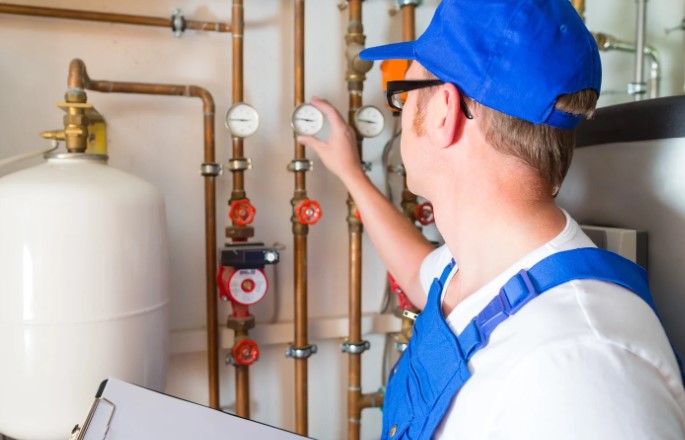
Can I Speed Up the Boiler Installation Process?
I found that preparation goes a long way. Here are a few things I did to make life easier for the engineer—and save time:
My Boiler Prep Tips:
- Cleared the space around the boiler beforehand
- Made sure someone was home to provide access
- Shared the model I’d chosen in advance
- Asked about any extra work (e.g., pipe upgrades, thermostat fitting) during the survey
A good engineer will work efficiently, but making the job easier for them can shave off unnecessary delays.
Do I Need to Be Home for the Whole Installation?
I stayed in for most of the day, mainly to be on hand in case any decisions had to be made.
However, for large parts of the install—like flushing the system or fitting the flue—I wasn’t needed.
If you’re comfortable, you can step out for errands, but I’d recommend being there at the beginning and end, at the very least.
Is Boiler Fitting Messy or Disruptive?
This was one of my concerns, especially since the boiler is in the kitchen. Thankfully, the disruption was minimal. The engineer used dust sheets and cleaned up thoroughly.
That said, there was a bit of noise from drilling and water draining, and I had no heating or hot water for a day. If you’re sensitive to that, it’s worth planning accordingly.
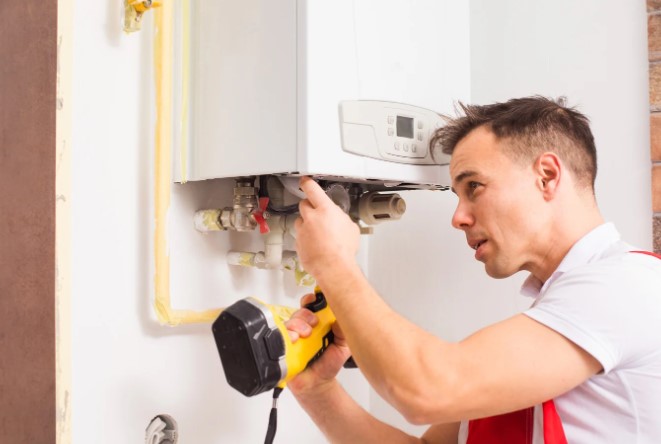
What is the Best Time of Year to Fit a New Boiler?
I chose to have it installed in late summer, and I’m glad I did.
Heating engineers tend to be less busy in the warmer months, which meant I got quicker booking and more flexibility with dates.
Winter is when most breakdowns happen, so if you can, it’s a smart move to plan a boiler upgrade before the cold sets in.
Final Thoughts: What I Learned from My Boiler Installation
So, how long does it take to fit a new boiler? In my case, it was just under two days—but that included a system conversion, some extra upgrades, and a location change.
A simple like-for-like replacement could easily be done in a single day.
The key takeaway is to understand the specifics of your setup. By asking questions during the quote stage and preparing your home in advance, you can make the whole process smoother and possibly even faster.
If you’re thinking about replacing your boiler, give yourself a buffer of time—but know that a well-planned install doesn’t have to be a major disruption.

by Kanimozhi BV | May 8, 2025 | Bathroom, DIY Ideas, Interior
Introduction: The Smell That Wouldn’t Go Away
I never thought I’d need to Google, “why does my bathroom smell like sewage?”, but when that unmistakable sewer-like odour started creeping through my en-suite, I knew something wasn’t right.
At first, I ignored it, thinking it would go away. But it only got worse—especially after showers, at night, and when it rained. Eventually, I realised I needed answers—and fast.
So, I set out to understand why my bathroom smells like sewage, and more importantly, how to stop it using smart DIY ideas.
Why Does My Bathroom Smell Like Sewage? – Common Causes I Found
Before jumping into fixes, I wanted to get to the root of the smell. Here’s what I uncovered through research and hands-on inspection:
1. The Trap Seal Was Dry (Even When Nothing Leaked)
If your bathroom smells like sewage but there are no leaks, chances are the P-trap has dried out.
This happens when fixtures (like a guest bathroom shower) aren’t used regularly. The water barrier that blocks sewer gases simply evaporates.
2. Blocked or Dirty Drains
Sometimes the smell only appears after I shower—and that’s because hair, soap scum, and grime clog the drains over time.
This blockage creates the perfect environment for bad bacteria and gases to fester.
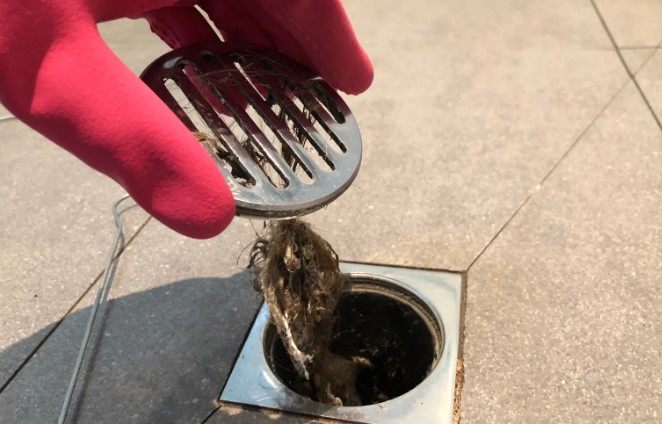
3. Cracked or Loose Seals That Aren’t Easy to Spot
I had no visible leaks, but a faint smell led me to inspect the toilet base—turns out the wax ring had cracked. Even a small seal break can let gases escape.
4. Ventilation Issues (Especially at Night or in Cold Weather)
Ever wonder why your bathroom smells like sewage at night or when it gets cold? I did too. Cold air increases pressure in your drainage system, pushing odours back inside.
Also, your bathroom vent pipe may be blocked or your extractor fan might be underperforming.
5. Sewer Line Pressure from Rainfall
Heavy rains can overload sewer systems.
I noticed the smell was strongest when it rained—that’s because the main sewer line was pushing gases back through the vent stack.
How Do I Stop My Bathroom from Smelling Like Sewer? – 5 Smart DIY Solutions
Once I knew the causes, I took action. Here are the 5 smart DIY solutions that worked for me:
1. Refill the P-Trap in Unused Fixtures
Sometimes, it’s just a simple case of evaporation.
How I fixed it?
- Ran water in toilets and all unused sinks and showers
- Poured a tablespoon of mineral oil to slow evaporation
Solved the issue when the smell occurred only sometimes or overnight
2. Clean Drains Naturally With Baking Soda and Vinegar
I avoided harsh chemicals and used this eco-friendly method:
Steps I followed:
- ½ cup of baking soda into the drain
- 1 cup of vinegar followed by covering the drain
- Waited 10–15 minutes and flushed with hot water
Best fix when the smell occurred after I showered
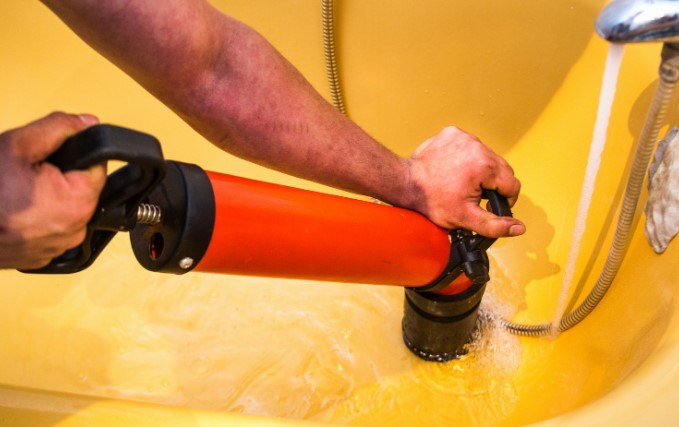
3. Snake the Drains and Use a Plunger
DIY Drain Unclogging:
- Used a drain snake to pull out hair and gunk
- Plunged the toilet and sink just in case of hidden blockage
Solved when the smell was strong with no visible leaks
4. Replace Toilet Wax Ring and Inspect Pipe Joints
A cracked wax ring may be invisible—but very smelly.
What I did?
- Removed the toilet
- Installed a new wax ring (under £10)
- Sealed joints with silicone for added security
Solved persistent odours with no obvious water leaks
5. Upgrade Ventilation to Prevent Odour Build-up
If your bathroom smells worse at night or in cold months, poor airflow is likely.
How I improved it?
- Installed a new extractor fan with humidity sensor
- Checked roof vent pipe for blockages using a torch
Prevented odours from returning after fixing the main issues
Quick DIY Checklist Before Calling a Professional
Before reaching for the phone, here’s what I personally checked:
- Refilled all trap seals
- Cleaned drains naturally
- Used drain snake and plunger
- Inspected toilet seal
- Upgraded extractor fan

Table: DIY vs When to Call a Plumber
| Problem |
DIY Fix |
Call a Plumber If… |
| Trap seal dry |
Refill with water |
Smell returns after filling |
| Clogged drain |
Baking soda, vinegar, snake |
Multiple drains backing up |
| Toilet seal cracked |
Replace wax ring |
Toilet shifts or leaks water |
| Poor ventilation |
New extractor fan, clear vent pipe |
Walls show mould or fan fails to run properly |
| Foul smell during rain |
Wait it out, flush drains |
Sewage backs up into home |
Why Does My Bathroom Smell Like Sewage Sometimes, Not Always?
I noticed that the smell came and went, especially during temperature shifts or when it rained.
That’s because sewer gas isn’t constantly being pushed into the bathroom—it builds pressure based on usage, air flow, and even weather.
Flushing all drains regularly and keeping traps wet helped me manage these “random” episodes.
Why Does My Bathroom Smell Like Sewage After Shower or At Night?
After shower: The hot water causes gases in the drain to expand and rise. Also, steam can push odours trapped in pipes into the air.
At night: Cooler air lowers pressure in the room but not in the pipes—this imbalance lets sewer gas rise through vent openings or cracked seals.

Why Does My Bathroom Smell Like Sewage When It Gets Cold or Rains?
Cold weather slows water flow, dries out traps, and worsens air pressure differences that lead to odours.
When it rains, external sewer lines can be overwhelmed, pushing back gases through vent pipes and drains.
Conclusion: What Finally Worked for Me
Dealing with a sewage smell in my bathroom felt overwhelming at first—but with a bit of patience and hands-on effort, I was able to fix it without calling a plumber.
The key was understanding the root cause, then applying smart, low-cost fixes. Now, my bathroom stays fresh all year round—no matter the weather, the time of day, or how often it’s used.
If your bathroom ever starts to smell like something died in the drains, don’t panic. Follow these steps on why does my bathroom smell like sewage, check the basics, and you’ll likely sort it out on your own—just like I did.

by Kanimozhi BV | May 5, 2025 | Kettle, Appliances
Boiling the kettle is one of those everyday things I rarely thought twice about—until I started paying closer attention to my energy bills.
That’s when I began to ask myself, how many watts does a kettle use, and how much electricity is this small but mighty appliance actually consuming energy?
In this guide on how many watts does a kettle use, I’ll walk you through everything I’ve discovered—from kettle wattage to energy-saving habits—all tailored to a UK perspective.
Understanding Kettle Wattage – Why It Matters?
What does ‘wattage’ really mean for my energy use?
Wattage is a measure of power—specifically, how much energy an appliance draws to operate.
So when my kettle says it’s 3,000 watts (or 3kW), that means it’s consuming 3,000 joules of energy every second.
Higher wattage means faster boiling, but it also means more energy used in a shorter time.
How is wattage connected to boiling time?
The larger the wattage, the faster the water reaches boiling point. For instance, my 3kW kettle boils a litre of water in about 2–3 minutes.
If I used a 2kW kettle, I’d be waiting longer. Time saved, however, may not always mean money saved.
Why is kettle wattage important in the UK?
In the UK, where electricity prices have become a hot topic, being aware of kettle energy consumption helps me manage my usage better.
Knowing the wattage gives me control—letting me estimate cost per boil and make smarter purchase decisions.

How Many Watts Does a Kettle Use in the UK?
Typical wattage ranges for UK kettles
The vast majority of electric kettles in the UK fall between 2,000 and 3,000 watts. Here’s what I commonly see in shops:
| Type of Kettle |
Typical Wattage |
| Basic electric kettle |
2,000 – 2,400 W |
| Fast-boil kettle |
2,800 – 3,000 W |
| Compact/travel kettle |
600 – 1,000 W |
| Smart kettles |
2,200 – 3,000 W |
How different brands compare?
While most kettles aim for that 3kW sweet spot, some brands offer energy-saving models that operate at slightly lower wattage but with improved insulation or boil-detection tech to conserve power.
Are energy-efficient kettles worth it?
Absolutely.
Though they might cost a little more upfront, kettles with energy-efficient features (like variable temperature control or insulated walls) can reduce your kettle energy consumption over time—especially if you’re a frequent tea drinker like me.
How Many Watts Is a Kettle?
What’s the standard wattage for home kettles?
If you’re wondering how many watts is a kettle, the answer is usually between 2,200W and 3,000W.
That’s standard for UK households, especially where speed and convenience are priorities.
High-wattage vs low-wattage kettles: what suits me?
If I need my cuppa fast and often, I’d go with a 3kW fast-boil model.
If I’m off-grid or want to conserve energy for eco-living, I might choose something closer to 2,200W or lower.
Wattage Comparison of Popular UK Kettles
| Brand & Model |
Wattage |
Notable Feature |
| Russell Hobbs Inspire |
3,000 W |
Fast-boil, energy-efficient |
| Breville Impressions |
3,000 W |
Stylish with rapid boil |
| Swan Travel Kettle |
920 W |
Compact, ideal for caravans |
| Dualit Classic |
2,400 W |
Durable build, traditional look |
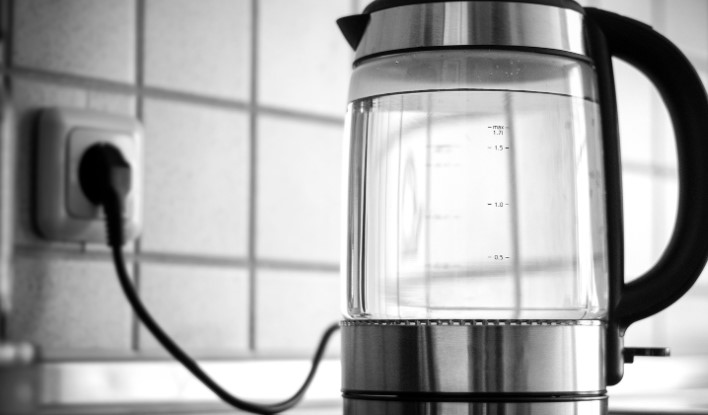
How Much Electricity Does a Kettle Use Per Boil?
Let’s break it down
If I boil 1 litre of water using a 3,000W kettle for 3 minutes:
- 3,000W ÷ 1,000 = 3kWh (per hour)
- (3 ÷ 60) hours = 0.05 hours
- 3kWh × 0.05 = 0.15kWh per boil
The average rate of £0.27 per kWh at the UK, that’s:
- 0.15 × £0.27 = £0.0405 or roughly 4p per boil
Using energy calculators to estimate
There are more UK-based electricity cost calculators available online.
I often use them to quickly estimate how much energy my kettle (and other appliances) are costing me over time.
Boiling Cost Table
| Water Amount |
Boil Time (3kW kettle) |
Estimated Cost |
| 250ml (1 cup) |
1 minute |
£0.013 |
| 500ml (2 cups) |
1.5 minutes |
£0.020 |
| 1 litre |
3 minutes |
£0.040 |
| 1.5 litres |
4.5 minutes |
£0.060 |
What Affects a Kettle’s Power Usage?
Water volume
It’s simple: the more water I boil, the more energy I use. So this is why I only fill the kettle with exactly what I need.
Initial water temperature
Water straight from the tap is colder in winter.
That means the kettle works harder to bring it to a boil, using more energy than it would in summer.
Bad habits to avoid
- Re-boiling water multiple times
- Overfilling the kettle “just in case”
- Ignoring limescale buildup, which lowers heating efficiency
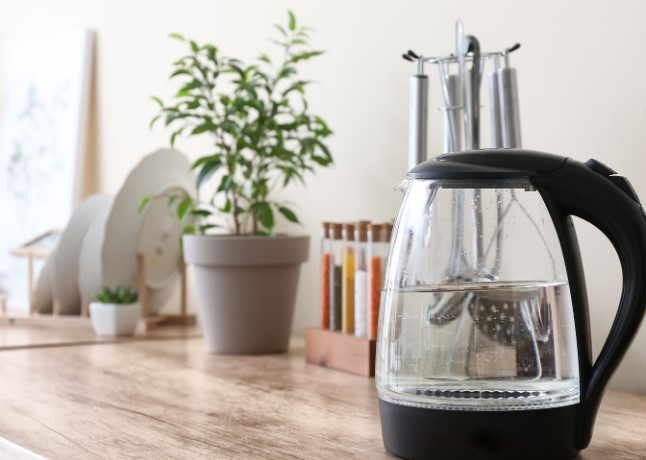
Can I Reduce My Kettle’s Energy Consumption?
Absolutely. Here’s how I do it:
- I measure the exact amount of water I need
- I descale my kettle monthly to maintain performance
- I avoid repeatedly re-boiling the same water
What to look for in an energy-efficient kettle?
When I was shopping for a new kettle, I looked for:
- Auto shut-off functions
- Boil-detection sensors
- Thermal insulation
- Variable temperature settings
Top 5 Energy-Saving Kettle Tips
- Boil only what you’ll use
- Choose a kettle with auto shut-off
- Keep your kettle free from limescale
- Opt for a lower-wattage model for occasional use
- Use warm (not hot) tap water when safe
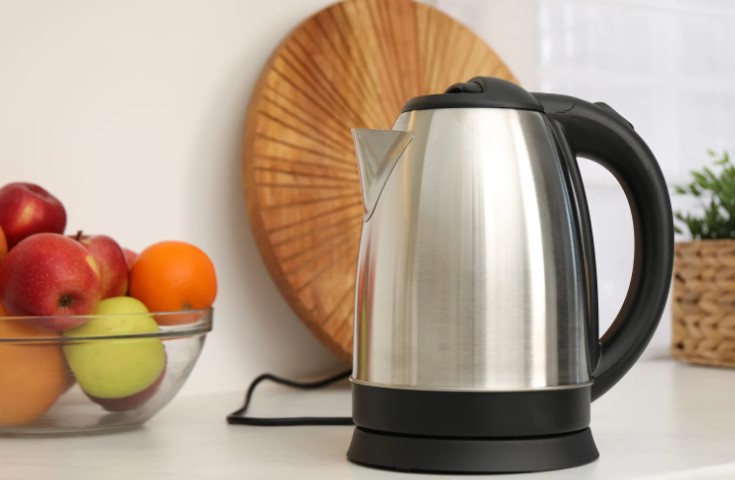
Conclusion: A Little Appliance That Packs a Punch
Now that I know how many watts a kettle uses, I’m much more mindful when I make a brew. It’s usually around 2,000 to 3,000 watts, but the real savings come from how I use it.
By boiling less water, choosing an efficient model, and avoiding bad habits, I’ve trimmed my electricity usage without giving up my tea time ritual.
Frequently Asked Questions
1. Is a kettle more efficient than a stove?
Yes—especially electric kettles in the UK, which transfer heat more directly than a hob or microwave.
Not always. While it boils faster, a higher-wattage kettle might not be ideal if you’re trying to be energy-efficient.
I’d say it’s about balancing speed and sustainability.
3. What wattage is ideal for UK homes?
In my experience, a 3,000W kettle is perfect for most UK households.
It strikes the right balance between fast boiling and practicality.
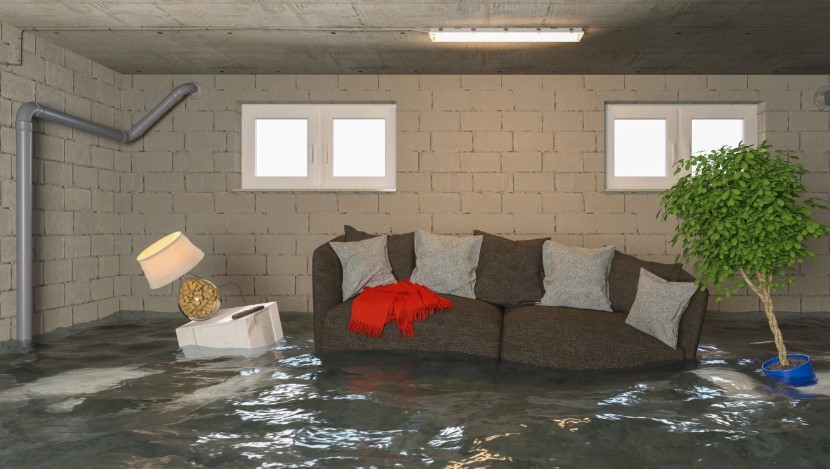
by Kanimozhi BV | Apr 30, 2025 | Wall, Interior
Water leaks that occur behind walls can be a nightmare to identify and fix.
I faced this exact issue in my home, and through trial, error, and expert advice, I managed to trace and solve the problem without tearing down half the house.
In this guide on how to find a water leak inside a wall, I’ll share exactly how I found the leak, the tools that helped, and what to do if you’re dealing with something similar.
Why It’s Important to Find a Water Leak Inside a Wall Early?
Leaks that occur behind walls aren’t always obvious. I learned this the hard way.
By the time I noticed faint water stains near the floor, the internal wall damage was already extensive.
The problem with hidden leaks is that they can silently cause:
- Structural damage to the timber framing
- Plasterboard disintegration
- Electrical hazards if wires are nearby
- Dangerous mould and mildew growth
If a wall leak goes unnoticed for weeks or months, it can lead to repairs that cost far more than the original issue.
How I Noticed the First Signs of a Leak?
My first indication of trouble wasn’t a burst pipe or a flood — it was a subtle, persistent musty smell.
The paint on the lower part of the living room wall started bubbling, and I could hear a faint dripping sound at night when the house was quiet.
Initially, I dismissed it, but when my water bill unexpectedly increased, I knew I had to act.

What Are the Signs of a Hidden Wall Leak?
Based on my experience, here are some red flags that may point to a leak behind a wall:
- Dampness or discoloured patches on the wall
- Peeling or bubbling paint and wallpaper
- Musty or mouldy smells
- Dripping or hissing sounds from the wall
- Unexplained increase in water bills
- Flooring near the wall becoming warped or spongy
Even one of these signs should prompt an investigation. Multiple signs usually confirm the presence of a hidden leak.
I didn’t start by cutting into the wall. Instead, I gathered a few tools to narrow down the location:
| Tool |
Use |
Suitability for DIY |
| Moisture meter |
Measures dampness levels in walls |
Yes |
| Thermal imaging scanner |
Detects temperature differences |
Partially (rental/pro) |
| Water meter monitoring |
Helps confirm ongoing leakage |
Yes |
| Acoustic leak detection kit |
Locates sound from hidden pipe leaks |
No (usually pro use) |
The moisture meter was the most affordable and easiest tool for me. It helped confirm that moisture levels were much higher in one specific section of the wall.

How to Find a Water Leak Inside a Wall? – My Step-by-Step Process
Here’s exactly how I identified the location of the leak without causing unnecessary damage:
Step 1: Visual Inspection
I examined the wall for any visible stains, damp patches, a hole or warped areas.
The area behind the bookshelf felt slightly cooler and looked off-colour — a subtle but telling sign.
Step 2: Checking with a Moisture Meter
I scanned various parts of the wall with a basic moisture meter.
The readings spiked drastically in a particular area, which helped me isolate the problem zone.
Step 3: Water Meter Test
To confirm there was a continuous leak, I turned off all taps and appliances and then monitored the water meter.
The dial was still moving, indicating water loss somewhere in the system.
Step 4: Narrowing Down the Area with Thermal Imaging
I rented a handheld thermal scanner for a few hours. It showed a cooler patch within the wall where water was likely present. This confirmed the moisture meter’s results.
Step 5: Minimal Wall Opening
Only after identifying the likely leak location did I cut into the wall. Behind the plasterboard, a small pinhole leak in a copper pipe had been steadily releasing water.
When I Decided to Call a Professional?
Although I managed to find the leak, repairing the pipe was outside my comfort zone. The leak was near a junction point, and I didn’t want to risk making it worse. I called a licensed plumber who:
- Replaced the damaged section of the pipe
- Sealed the joint to prevent future leaks
- Recommended some insulation to reduce condensation
Calling in a professional helped me avoid a major DIY mistake and ensured the repair would last.
How Much Does Leak Detection and Repair Typically Cost in the UK?
Here’s a breakdown of what I spent and what you might expect to pay:
| Service/Tool |
Estimated Cost in the UK |
| Moisture meter |
£20 – £50 |
| Thermal scanner rental |
£30 – £60 per day |
| Leak detection service |
£120 – £250 |
| Minor plumbing repair |
£150 – £300 |
Prices can vary depending on your location and the severity of the issue, but in most cases, early detection will always save you money in the long run.

What Can Be Done to Prevent Future Leaks Behind Walls?
After fixing the leak, I took a few steps to make sure this wouldn’t happen again:
- I installed smart water leak detectors in key areas of the house
- I scheduled annual plumbing checks with a local plumber
- I made a point to avoid drilling or hammering into walls without first checking for pipes
Preventative action is far cheaper than emergency repairs, and it gives peace of mind.
Final Thoughts on How to Find a Water Leak Inside a Wall
Discovering a water leak inside a wall is stressful, but with the right approach and with the guides help on how to find a water leak inside a wall, it doesn’t have to turn into a full-blown crisis.
My advice is simple: stay alert to early signs like mould or strange sounds, invest in basic detection tools, and don’t hesitate to call in a professional when things go beyond your comfort level.
Taking swift action saved me hundreds in repairs and stopped the damage before it became unmanageable.
Common Questions on How to Find a Water leak inside a Wall
1. Can a water leak behind a wall go away on its own?
No. A leak will continue to cause damage as long as it exists. Even if it seems to dry temporarily, water is likely accumulating deeper within the wall or spreading elsewhere.
2. Does home insurance cover hidden wall leaks in the UK?
It depends on the policy. My insurance covered the resulting damage (like wall repair), but not the cost of locating or fixing the leak itself. Always check your policy details or contact your insurer for clarification.
3. Should I break the wall to find the leak?
Only as a last resort. Try using a moisture meter or thermal imaging first. These tools can narrow down the area and avoid unnecessary damage.
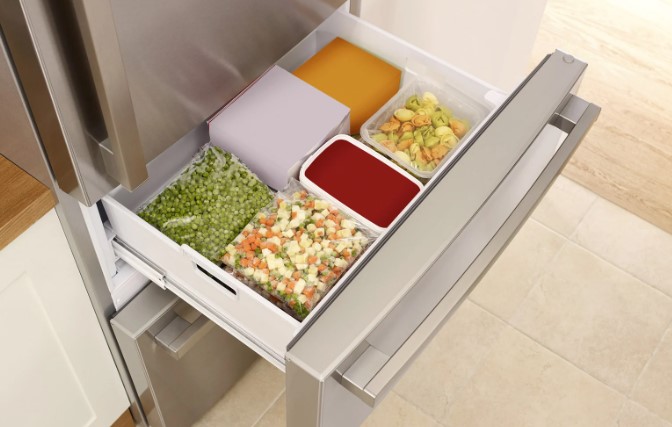
by Kanimozhi BV | Apr 29, 2025 | Refrigerator, Appliances
When I first tried adjusting my fridge, I was surprised by how unclear the temperature dial was. Most fridges don’t show the actual temperature, just a dial marked from 1 to 7.
So I did some digging to answer the question: what is the coldest setting on a fridge 1-7?
Let me walk you through everything I’ve learned, from fridge dial logic to food safety and season-based settings.
Why Fridge Settings Matter More Than You Think?
How Incorrect Settings Can Lead to Food Spoilage?
I used to assume any cool setting was fine — until my milk started going off too quickly. It turns out that an incorrect fridge setting can lead to:
- Faster bacterial growth
- Shortened shelf life of fresh food
- Higher energy consumption
For me, setting the right fridge temperature meant fewer trips to the shop and less food waste.
The Ideal Fridge Temperature in the UK
According to the UK’s Food Standards Agency, a fridge should stay at or below 5°C.
The sweet spot most experts recommend is between 3°C and 5°C. Anything warmer, and there’s a risk of unsafe food storage.

What Is the Coldest Setting on a Fridge 1-7?
If your fridge has a dial from 1 to 7, it might be very confusing for you.
The numbers don’t represent temperature in degrees — they represent cooling power.
Is 1 or 7 the Coldest?
The answer is simple:
7 is the coldest setting
1 is the warmest setting
Turning the dial towards 7 increases the fridge’s cooling power. I use this during hot months or when my fridge is packed with food.
How the Fridge Dial Works?
Fridge dials typically adjust how long the compressor stays on:
- Lower numbers keep it on for a shorter time, making the fridge warmer.
- Higher numbers keep it on longer, making the fridge colder.
That’s how I realised why my lettuce was freezing — I had cranked it to 7 when I didn’t need to.
Fridge Settings 1-7 Explained
What Each Number Typically Means?
Here’s how I interpret the fridge dial:
- 1 – Warmest (approx. 7–8°C)
- 2 – Mildly cool (approx. 6°C)
- 3 – Acceptable (approx. 5°C)
- 4 – Ideal for most usage (approx. 4°C)
- 5 – Cold (approx. 3°C)
- 6 – Very cold (approx. 2°C)
- 7 – Coldest (approx. 1°C or lower)

Which Setting to Use During Summer and Winter?
I adjust based on the season:
- Summer: I set the dial around 5 or 6 to fight higher room temps.
- Winter: I use 3 or 4 to avoid overcooling or freezing certain foods.
Step-by-Step Guide to Adjusting the Dial
This is what I usually do with the setting of the fridge:
- Turn the dial to 4 as this is a safe initial point.
- Make a place for the fridge thermometer on the middle shelf.
- Wait 24 hours and check the temperature.
- Adjust up or down depending on results.
How to Check the Actual Temperature Inside the Fridge?
Don’t rely on guesswork. I always keep a small fridge thermometer inside, placed in the middle (not the door).
It gives an accurate reading to make sure I’m always between 0°C and 5°C.

Common Mistakes to Avoid When Setting Your Fridge
Assuming Midpoint Is Always Right
I used to think setting the dial to 4 (the middle) was perfect year-round.
But in summer, this wasn’t enough. I’ve learned to adjust it according to ambient temperature and how full the fridge is.
Ignoring Room Temperature and Fridge Load
External factors make a big difference.
A hot kitchen or a stuffed fridge needs a colder setting, while an empty fridge in winter needs a gentler one to avoid freezing.
Comparison Table: Fridge Dial Settings and Estimated Temperatures
| Fridge Dial Setting |
Estimated Temperature (°C) |
When to Use |
| 1 |
7–8°C |
Too warm – not safe for food storage |
| 2 |
6°C |
Better, but still risky |
| 3 |
5°C |
Acceptable in cooler months |
| 4 |
4°C |
Ideal year-round baseline |
| 5 |
3°C |
Good during summer |
| 6 |
2°C |
Use when fridge is very full or room is hot |
| 7 |
1°C or lower |
Coldest – risk of freezing some items |
Conclusion: Choosing the Right Setting for Freshness and Safety
So, what is the coldest setting on a fridge 1-7? It’s 7 — yet the coldest is not always best.
I now keep mine around 4 or 5, depending on the season and how much food I’ve stored.
Remember:
- Always check the actual temperature with a thermometer.
- Adjust seasonally and don’t overload the fridge.
- A bit of fine-tuning can go a long way in keeping your food safe and fresh.
Related Article: How to Reset Beko Fridge Freezer?
FAQs: Coldest Fridge Settings and Best Practices
1. Should I leave my fridge on setting 7 all the time?
No, setting 7 is the coldest, but it can freeze some foods. I only use it during heatwaves or if the fridge is packed.
2. Is it safe to store meat in a fridge set to 3 or 4?
Yes, if the internal temperature stays below 5°C. I always use a thermometer to confirm this.
3. Why is my food freezing even though my fridge is on setting 4?
It could be due to poor air circulation or the placement of items near the cooling vent. Try moving items and rechecking the temperature.






















